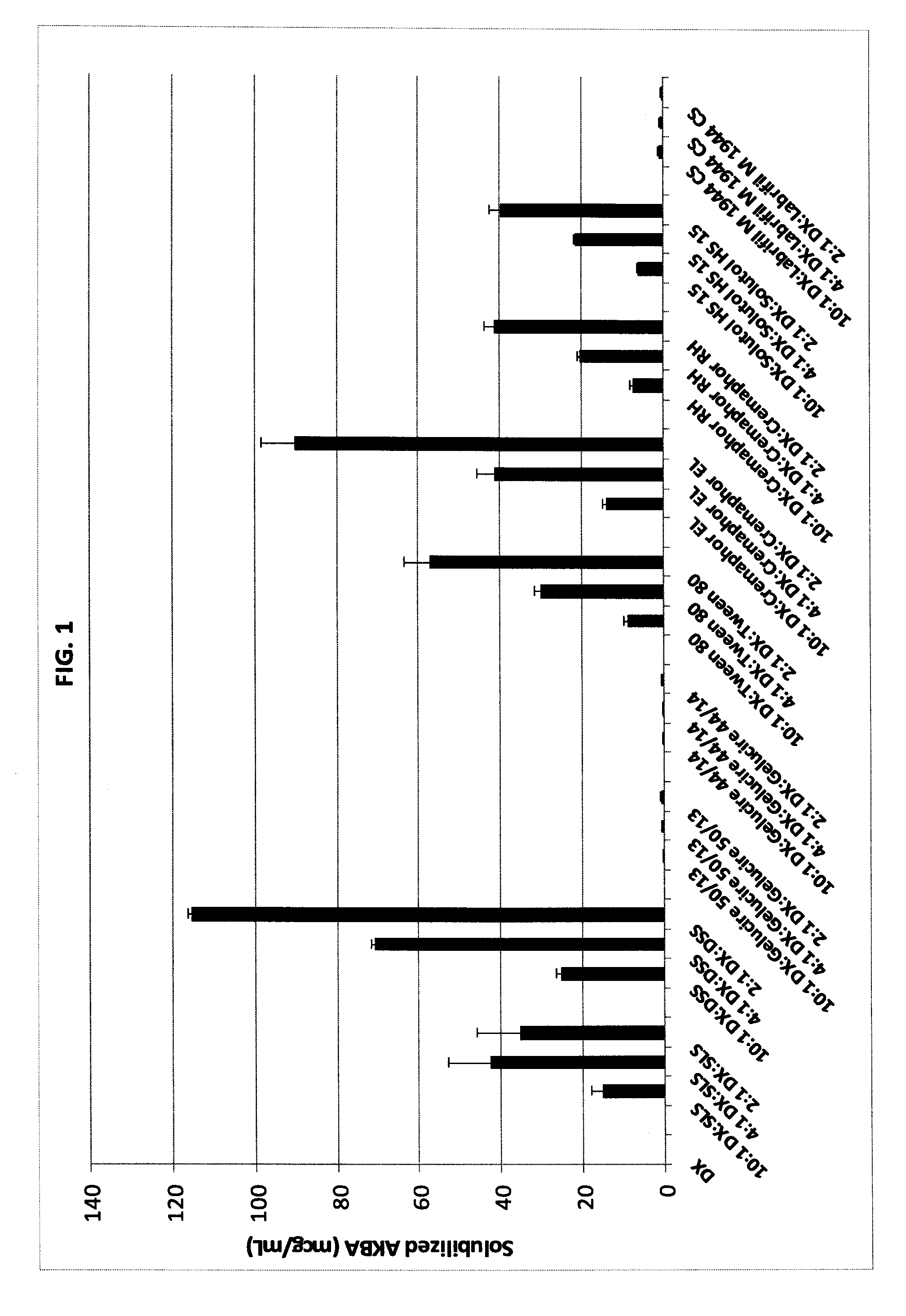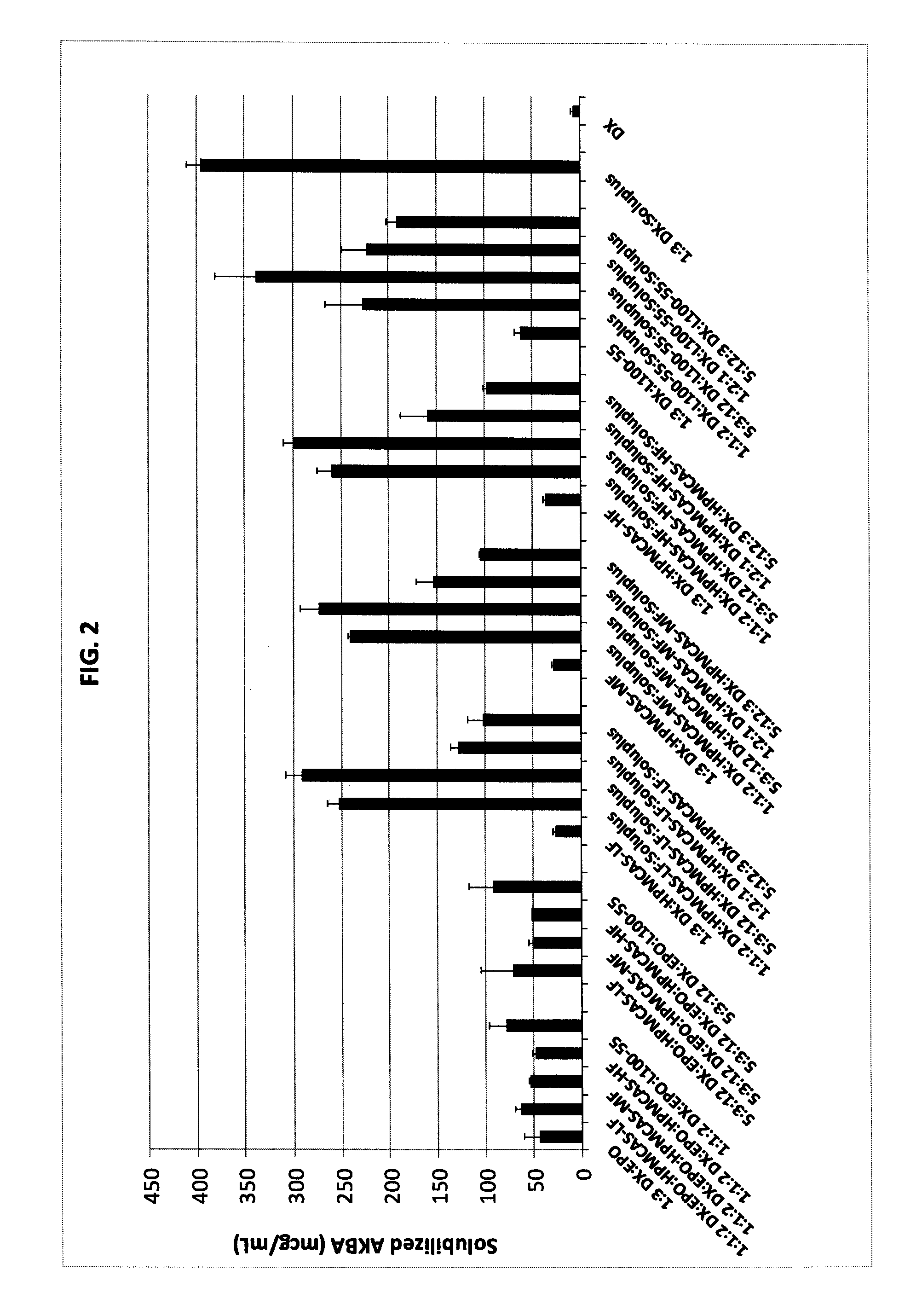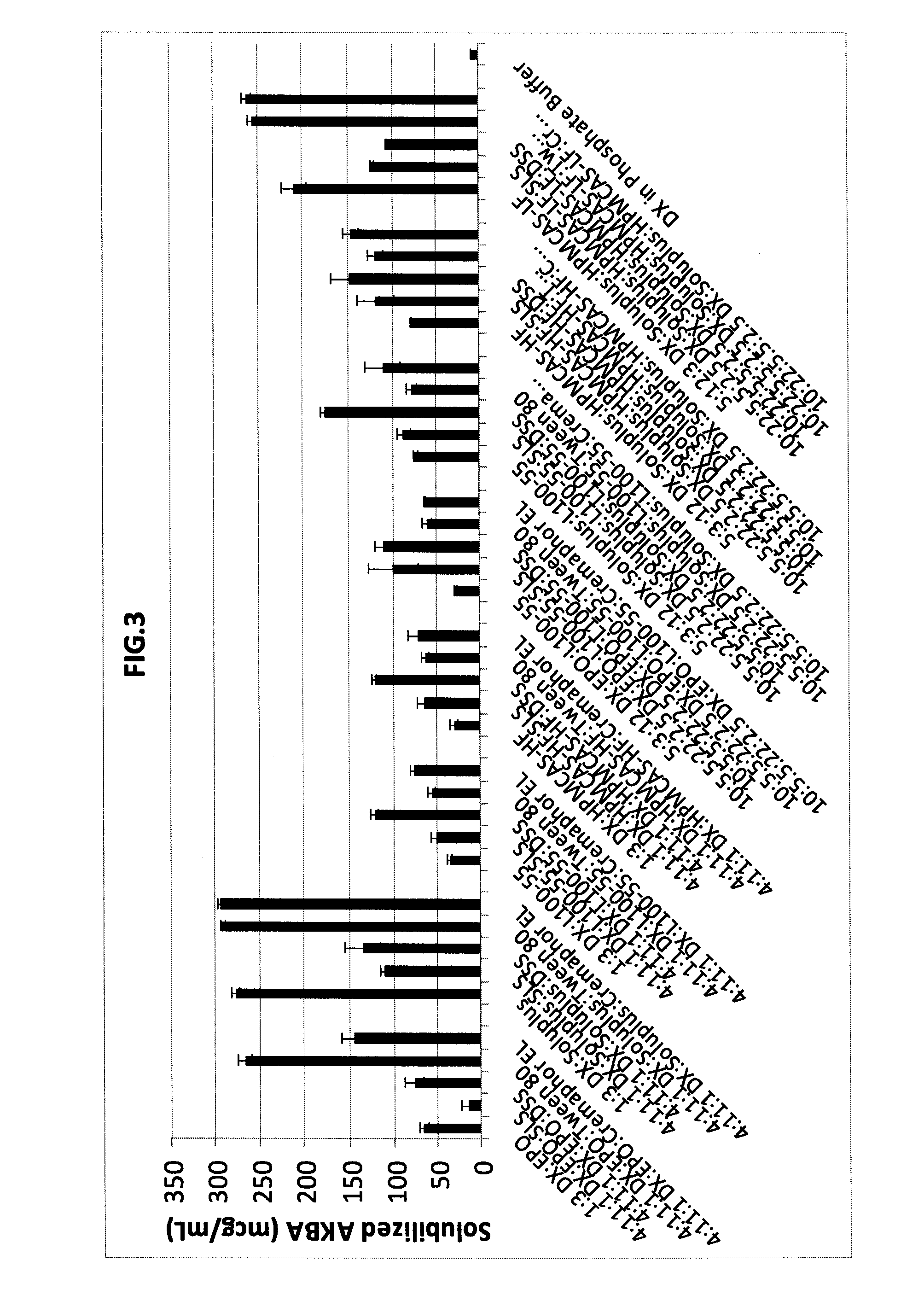Pharmaceutical formulations of acetyl-11-keto-b-boswellic acid, diindolylmethane, and curcumin for pharmaceutical applications
a technology of acetyl-11-keto-boswellic acid and diindolylmethane, which is applied in the direction of anhydride/acid/halide active ingredients, heterocyclic compound active ingredients, biocide, etc., can solve the problems of poor bioavailability, poor bioavailability, and often unfulfilled benefits of many potentially therapeutic molecules, and achieve the effect of increasing the bioavailability of the api
- Summary
- Abstract
- Description
- Claims
- Application Information
AI Technical Summary
Benefits of technology
Problems solved by technology
Method used
Image
Examples
example 1
[0117]Evaluation of Solubility Enhancement Capability of Surfactants for Solubilizing AKBA.
[0118]100 mg of AKBA was placed in a 10 mL cuvette, followed by the desired amount of surfactant to be studied to give the desired ratio of materials. Powder surfactants were measured directly into the cuvette in the amounts of 10 mg, 25 mg and 50 mg. Liquid surfactants were added by making a solution of 1.25 gm of surfactant in 250 ml of buffer, and then adding 2 ml, 5 ml, or 10 ml of the buffer solution to add 10 mg, 25 mg and 50 mg of the surfactant. A pH 6.8 phosphate buffer was added as needed to bring the volume up to 10 mL. After all material was added to the cuvette, the cuvette was sealed, sonicated for 2 hours on two separate occasions and then shaken for at least 72 hours at 37° C. The resulting material was filtered through a 0.20 micron filter and analyzed by UV-Visible spectroscopy to determine the AKBA content. Results are given in Table 1 and FIG. 1.
example 2
[0119]Evaluation of Solubility Enhancement Capability of Polymer Carriers (Thermal Binders) for Solubilizing AKBA.
[0120]20 mg of AKBA was placed in a 10 mL cuvette, followed by the desired amount of polymer carriers to be studied to give the desired ratio of materials. A pH 6.8 phosphate buffer was added as needed to bring the volume up to 10 mL. After all material was added to the cuvette, the cuvette was sealed, sonicated for 2 hours on two separate occasions and then shaken for at least 72 hours at 37° C. The resulting material was filtered through a 0.45 micron filter and analyzed by UV-Visible spectroscopy to determine the AKBA content. Results are given in Table 1 and FIG. 2.
example 3
[0121]Evaluation of Solubility Enhancement Capability of the Combination of Polymer Carriers (Thermal Binders) and Surfactants for Solubilizing AKBA.
[0122]20 mg of AKBA was placed in a 10 mL cuvette, followed by the desired amount of polymer carriers and / or surfactants to be studied to give the desired ratio of materials. A pH 6.8 phosphate buffer was added as needed to bring the volume up to 10 mL. After all material was added to the cuvette, the cuvette was sealed, sonicated for 2 hours on two separate occasions and then shaken for at least 72 hours at 37° C. The resulting material was filtered through a 0.45 micron filter and analyzed by UV-Visible spectroscopy to determine the AKBA content. Results are given in Table 1 and FIG. 3.
TABLE 1Solubility enhancements of acetyl-11-keto-β-boswellic acid (AKBA), givenin microgram per milliliter of pH 6.8 phosphate buffer. The material compositionis described by the ratio of AKBA to additives comprising the composition.Material -Combinatio...
PUM
| Property | Measurement | Unit |
|---|---|---|
| solubility | aaaaa | aaaaa |
| solubility | aaaaa | aaaaa |
| solubility | aaaaa | aaaaa |
Abstract
Description
Claims
Application Information
 Login to View More
Login to View More - R&D
- Intellectual Property
- Life Sciences
- Materials
- Tech Scout
- Unparalleled Data Quality
- Higher Quality Content
- 60% Fewer Hallucinations
Browse by: Latest US Patents, China's latest patents, Technical Efficacy Thesaurus, Application Domain, Technology Topic, Popular Technical Reports.
© 2025 PatSnap. All rights reserved.Legal|Privacy policy|Modern Slavery Act Transparency Statement|Sitemap|About US| Contact US: help@patsnap.com



